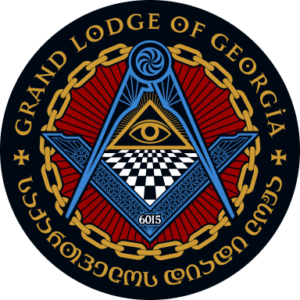main » Freemasonry in Georgia
- Freemasonry in Georgia
თვითონ მასონები საკუთარ წელთაღრიცხვას 4000 წლით ადრე იწყებენ ქრისტესშობამდე, მიანიშნებენ რა, იმ უძველესი ტრადიციის არსებობაზე, რომელიც განმანათლებლობაზე, სიბრძნეზე და სიყვარულზე დაფუძნებული, გადაეცემა უხსოვარი დროიდან, თაობიდან თაობას. თავიდანვე დავძენ – მასონობა ცხოვრების წესია, ნაწილობრივ დაფუძნებული გარკვეული მოქმედებებისა (რიტუალი) და მორალური ფასეულობების ალეგორიულ თუ სიღრმისეულ გამოყენება – გადაცემაზე. სისტემა, რომელიც უნიკალურია, კრებსითია დროსა და სივრცეში, მოიცავს უნიკალურ თავისებურებებს.
Modern Freemasonry is several centuries old, and in order to create a coherent version, we must connect the history and activities of several organizations and groups of individuals. If we rely on specific facts and analyze them, we will see that the foundation of the modern Masonic order was laid by stonemasons of the Middle Ages, who were quite necessary and rare craftsmen, architects and engineers at that time. Knowledge of geometry, architecture, and engineering was so rare that masons (Mason It is a French word and it means a stonemason) united in guilds (professional associations), where knowledge was transmitted only by handwriting and a secret code. Acceptance of new candidates in the guilds was quite difficult, based on serious selection and trust. From this period, the mentioned guilds were called Free Masons' Unions. Necessity led to the introduction of many secret signs, greetings, and assembly symbols.
In fact, existing today The forerunners and founders of the Masonic society იყვნენ: შუა საუკუნეების stone quarries (architects, engineers and builders); various Mystic Order, including the Knights Templar (Templars), the Rose and Cross Society (Rosicrucians), and Renaissance since time immemorial Artists, intellectuals and thinking people.
ჯერჯერობით უცნობია, ვინ იყო პირველი უძველესი თავისუფალი და მიღებული ქვისმთლელი, ანუ მასონი, საქართველოში, მაგრამ აღმოჩნდა, რომ მათი რიცხვი არც თუ ისე მცირეა, როგორც ჩვენი კვლევის დაწყებამდე გვეგონა. ოპერატიული მასონები, ანუ პრაქტიკოსი ქვისმთლელები, ჩვენს ისტორიაში მრავლად გვყავდა, მათი აგებულია მრავალი ციხე – სიმაგრე, ტაძარი, მათ შორის უნიკალური Svetitskhoveli, Ikalto and Gelati. but, accepted Traces of stonemasons are not so easily found in our history. There are many reasons for this circumstance, the main ones being the annexation of Georgia (1802-1918) and the occupation of Georgia (1921-1991).
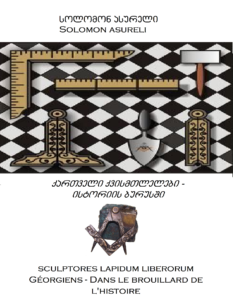
რეკომენდირებული ლიტერატურა
We believe that without the past, there can be no present, and especially no future. The history of the development of the Georgian Masonic Order must be divided into five stages. the first stage ეს არის მე-18 საუკუნე, ჯერ კიდევ საქართველოს ანექსიამდე, უკვე ამ პერიოდში, ქართული თავად – აზნაურობისა და სამეფო ოჯახის მრავალი წარმომადგენელი რუსეთის იმპერიის მასონური ლოჟების წევრები ხდებიან. the second stage - It is the period of annexation of the Kingdom of Georgia, 1802-1918 years. There are historical records of Georgians joining the Masonic Order from 1806-1816. At that time, Georgia was part of the Russian Empire (annexed and divided into "governias"), and at the end of the 19th century, there were already Masonic lodges in Tbilisi and Kutaisi governorates, there was also a Georgian (Caucasian) lodge in St. Petersburg, Georgians were members of various lodges throughout the empire. scale.
19th century In the end, the so-called Irregular Masonic Wing, “Great East of Russian peoples"(Rkhda), part of our compatriots, was included in the jurisdiction of this Grand Lodge. There is a reasonable assumption that a Masonic lodge also existed in the city of Batumi, which was not included swayedin In the same period, many foreign masons also arrived in Georgia and in the Caucasus in general, mainly from France, England, Italy, Germany, the Netherlands, etc., and they were actively involved in the development of masonic lodges.
From the mentioned first and second periods of the development of Georgian and Georgian Freemasons, we would single out the princes already in the amala of King Vakhtang VI and the representatives of the nobility in Georgia: Tsitsishvili, Baratashvili, Dadiani, as well as Batonishvili (from all three branches of the Bagrations) - the same, Grigol John's son, the grandson of King George XII, who was probably initiated in St. Petersburg before 1816, as well as Davitashvili, Donaurov, Abamelik. (Jambakur) Orbelians, Fanchulidzes, Sarkeulidzes, Chilashvilis, Shalikashvilis, etc. .
In the history of the development of Georgian Freemasonry The third stage Associated with the end of the nineteenth century and the beginning of the twentieth century, up to 1921. At the end of the nineteenth century, Freemasonry, which had been banned for several decades, began to be restored in the Russian Empire. Georgians were still active throughout the empire. This stage in Georgian Masonic history is very interesting and important for the history of our homeland as well.
In this period, I will single out several Georgian Masons, most of them are well known to our society, not as Masons, but as state or civil public figures, writers, representatives of the national movement and educators. Among them are: Giorgi Tumanishvili, Alexander Sumbatashvili - Yuzhini, Giorgi Sidamon - Eristavi, Alexander Amilakhvari, Kita Abashidze, Jason Bakradze, Alexander Diosamidze, Petre Kifiani, Giorgi Zhdanov, Evgeni Gegechkor, Karlo Chkheidze, Noah Ramishvili, Giorgi Mazniashvili, Varlam Gelovani, Noah Jordan, Akaki Chkhenkeli, Irakli Tsereteli, Vladimir Nizharadze, Sergo Fitskhelauri, Spyridon Kedia, Giorgi Gvazawa and many others.
Development of Georgian Freemasonry The fourth stage It is connected with Georgian Masons in emigration, as well as within the Soviet Union. And already The fifth stage - The history of the Second Republic of Georgia - our modern times...
ქართული და ქართველ მასონთა განვითარების მეოთხე ეტაპი – ემიგრაციაში იწყება, როგორც მოგეხსენებათ, ქართული ემიგრაციის უდიდესი ნაწილი საფრანგეთში ჩადის, იქ მათ ორ მასონურ გაერთიანებასთან აქვთ კავშირი, მცირე ნაწილს – საფრანგეთის დიად აღმოსავლეთთან (მაგ. იგივე ნოე ჟორდანია), ხოლო დანარჩენებს – რეგულარულ at the Grand Lodge of France and of the Ancient and Accepted Statutes of Scotland with the Supreme Council of France (d. 1804).
Most of the Georgian emigrants resettled in Paris join one of the oldest, traditional and regular Masonic directions - Grand Lodge of France. There, the lodgeGolden Fleece"in , united with Caucasian Muslims, mountain Caucasians, Russians (Slavs) and Armenians. The foundation of the lodge was dated November 12, 1924, and the ritual installation took place on January 25, 1925. entered the lodge of the Grand Lodge of France Jurisdiction and assigned number – 536, the work was carried out in the Masonic temple On rue Piuto #8, the symbolic lodge worked UAncient and accepted in the Scottish Rite. But soon the lodge "Golden Fleece" was dissolved, renamed and the lodge "Jupiter", where the ethnically Armenian and Slavic brothers stayed.
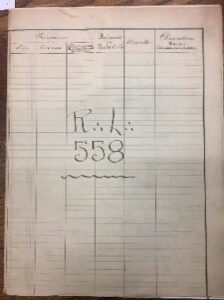 In 1926, the lodge "Prometheus", რომლის ინსტალაცია გაიმართა 1927 წლის 19 იანვარს და რომელშიც კავკასიელი მუსლიმები (ძირითადად დღევანდელი აზერბაიჯანიდან), მთიელი კავკასიელები (დაღესტნელები, ინგუშები, ჩეჩნები, ა.შ.) და ქართველები შევიდნენ. ეს ლოჟაც უძველესი და მიღებული შოტლანდიური რიტუალით მუშაობდა და მას მიენიჭა ნომერი – 558.
In 1926, the lodge "Prometheus", რომლის ინსტალაცია გაიმართა 1927 წლის 19 იანვარს და რომელშიც კავკასიელი მუსლიმები (ძირითადად დღევანდელი აზერბაიჯანიდან), მთიელი კავკასიელები (დაღესტნელები, ინგუშები, ჩეჩნები, ა.შ.) და ქართველები შევიდნენ. ეს ლოჟაც უძველესი და მიღებული შოტლანდიური რიტუალით მუშაობდა და მას მიენიჭა ნომერი – 558.
Here we present to you the symbolic lodges "Golden Fleece", "Prometheus" and some Georgian members of other Parisian lodges:
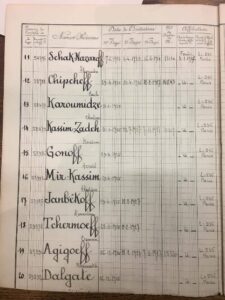
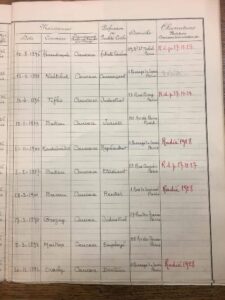
Archival documentation is the property of the Grand Lodge of France
- Amilakhwar Vladimir Aleksandres-dze - Golden Fleece (received in the Order in 1924)
- Andronikashvili Archil, Solomon - The Golden Fleece (1924)
- Vachnadze Irakli, Aleksandres-dze - The Golden Fleece (1924)
- mixed us up Giorgi - Golden Fleece (27.03.1926)
- It's gobechi Joseph - Golden Fleece (29.05.1926)
- Karumidze Shalva, – golden fleece (31.01.1925)
- Vachnadze David - Prometheus (19.03.1927)
- Kedya Spyridon – Prometheus (19.02. 1927)
- Orbelian Irakli - Prometheus (19.03. 1927)
- Beetle Jacob, son of Bessarion Prometheus (27.03. 1926)
- Skhirtladze David - Prometheus (19.02. 1927)
- Jackal Constantine – Lotus (1932)
- Eligulashvili Ioseb – Golden Fleece
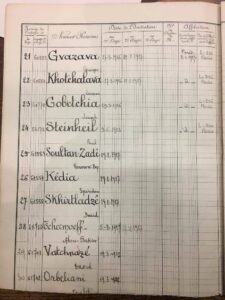
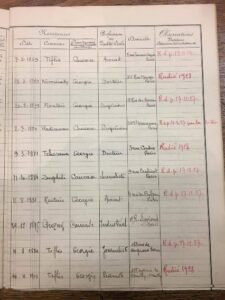
Archival documentation is the property of the Grand Lodge of France
In order to understand what a Georgian Freemason is, we need to know what Freemasonry itself is, why it developed in this form in the Western Hemisphere, what it represented to individuals there and then and here and now. For example, in France, "Freemasonry" (not the organization, but the Masonic essence itself) is a national phenomenon, so to speak - a civil state, which stands on the foundations of liberty, equality and fraternity, and represents freedom of conscience as a precursor to a successful and developed individual.
It can be said that Freemasonry is one of the pillars, if not the backbone, of the development of statehood and civil society in any successful state, beyond politics and religion, which can also be considered as the pillars of the existence of this or that state. Unlike them, Freemasonry is based on the principles of universal equality and love of wisdom, this makes them significantly different.
რელიგიური ინსტიტუტების საზოგადოებრივი გავლენა ძლიერდებოდა მაშინ, როდესაც სახელმწიფოში კრიზისული სიტუაცია [სუსტი იყო პოლიტიკური და სამოქალაქო საყრდენი] იყო და სხვა სახელმწიფო ინსტიტუტები იმ მომენტში ვერ ახერხებდნენ შექმნილი საფრთხის დაძლევას და სიტუაციის კონტროლს. საქართველოს სამეფოს ანექსიის და სახელწმიფო ინსტიტუტების მოშლის შემდგომ, 1802 წლიდან, რუსეთის იმპერიამ დაიწყო ქართული ეკლესიის რეალური დევნა, ჯერ რუსიფიკაციის მცდელობით, შემდგომ ავტოკეფალიის პირდაპირი გაუქმებით და სხვა. მრავალი მავნებლობა განხორციელდა ჩვენს სამშობლოში, რუსეთის ეკლესიის ხელით, რომელიც იმ დროინდელი ცარისტული რეჟიმის დამსჯელი აპარატის ერთ-ერთი ეფექტური ინსტრუმენტი იყო. საბჭოთა რეჟიმმა სამღვდელოება ფაქტობრივად მთლიანად გაწყვიტა და შემდგომ კომკავშირლები გაამწესა ეკლესიებთან მრევლის ამოსაცნობად და დასასჯელად, ისევე, როგორც ეკლესიის რიგებში უშიშროების სამსახურის მრავალი მუშაკი ჩაინერგა.
Since 1991, like the entire Georgian state, nation and civil society, the Georgian Church as a religious institution has been re-formed and undergoing transformation.
Georgia moved from a monarchical to a republican system in 1918, and the constitution of the first republic was adopted only in 1921. I mentioned this so emphatically and distinctively because the history of feudal Georgia is quite interesting in terms of relations between the church and the state, but it was at the beginning of the twentieth century that quite significant progress was noticed in terms of regulating legal relations between these two institutions.
It should be noted here that the stage of transition from the feudal-monarchical to the republican system was carried out during the Russian Qaida, and we actually skipped the bourgeois period before Sovietization [it was a rather short period for the formation of civil society and private ownership, business development and culture].
For the founders of the 1921 Constitution, one of the most important starting provisions was the separation of church and state (Chapter 16 of the Constitution). In the materials of the Constitutional Commission, there is a document called "On the separation of the church from the state", which gives us a clear idea of the values of the authors of the Constitution and the ideological-theoretical basis of solving the issue. He was the author of this document c. Naneishvili And it begins with a historical excursion and a description of the close relations that existed between the state and the church throughout the centuries.
The document emphasizes that the desire to participate in the implementation of the government brought the state and the church closer to each other, although the disagreement distribution of power It led to an open or hidden struggle between them. According to the authors of the document, "the importance of the church in regulating social relations is very small" and, except for monarchical states, the connection between the church and the state "has lost all meaning".
In the same document, it is emphasized that the relationship between the church and the state is regulated in democratic states freedom of conscience on the soil. They also note that freedom of conscience recognition Makes the "separation of church and state" inevitable... "Because as long as there is a connection between one church and the state, in the form of dependence, freedom of conscience cannot be exercised and ensured."
(SCSSA, F. 1833, record 1, item 192, page 58)
According to the authors of the document (which was fully shared by both the authors of the Constitution and the majority of members of the Parliament of the First Republic), Freedom of conscience, the content of which is that "every individual can believe what he wants and serve the cult he chooses", refers to a too intimate area, and legislation should not intrude into this area, because, "as human thoughts and dreams are unfit objects for legal sanction, Such religious views are completely useless for the regulation of the state". It is also mentioned that Freedom of conscience It includes the freedom of the church, independence from the state.
The author analyzed the experience of several other states in this matter and wrote in the manuscript and then sent it - "As others have been able to, we can also cut the most important threads of this connection." Finally, the 16th chapter of the Draft Constitution of Georgia during the adoption of the Constitution did not cause much controversy, there were minor remarks, but the said opinions were not taken into account. The project was adopted unchanged, only some technical amendments were made to it on May 11, 1920.
It should be noted that on July 31, 1920, the Catholicos-Patriarch of All Georgia sent the resolution of the church assembly to the founding assembly, which, along with many other interesting historical facts, stated the position of the assembly. According to the church council, the state and the church "separation from each other" There would be no danger. The congregation believed that they would be able to "serve the mother nation" independently of each other.
This is an interesting fragment from the recent history of Georgia. Name of the members of the Parliamentary-Constitutional Commission: Chairman - R. Arsenidze; P. Sakvarelidze; c. Russia; i. Baratashvili; L. Natadze; c. it confused us; K. Japaridze; i. gobechia; and "Knowledgeable person invited from outside - G. Naneishvili.
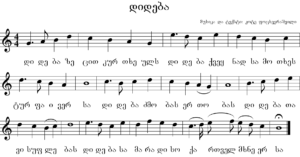 National Anthem of the First Republic of Georgia
National Anthem of the First Republic of Georgia
Unfortunately, during the twentieth century, Georgia was under the control of the Soviet Union, which had a very negative impact on many aspects of the development of Georgian society. Against this background, due to the lack of relevant traditions in the past, even today, democratic, civil and public institutions are not fully developed in Georgia; It takes a long time to develop an appropriate political and civic consciousness and culture, as well as true tolerance, respect for other people's opinions and a correct perception of democratic values.
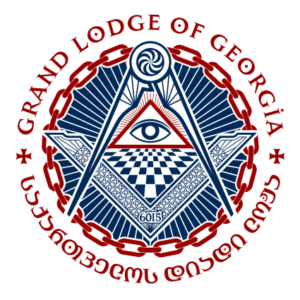 In 2009-2015, the development of Freemasonry of Georgia takes place The fifth stage, when in March 2015, the tradition and the connection with the historical roots, which had been broken for almost a century, were restored - of Georgia in the territory of Masons Grand Lodge was founded. GRAND LODGE OF GEORGIA It is a worthy continuation of the historical roots and Masonic traditions, which were laid by our Georgian brothers decades ago!
In 2009-2015, the development of Freemasonry of Georgia takes place The fifth stage, when in March 2015, the tradition and the connection with the historical roots, which had been broken for almost a century, were restored - of Georgia in the territory of Masons Grand Lodge was founded. GRAND LODGE OF GEORGIA It is a worthy continuation of the historical roots and Masonic traditions, which were laid by our Georgian brothers decades ago!
Initiation of Sakathvelo citizens in symbolic lodges of different countries (jurisdictions) (symbolic lodges make up many lodges, at least three such symbolic lodges and 21 Master Masons) has been revived since the 90s of the previous century. Unfortunately, due to the Sovietization of Georgia (1921-1991), the Masonic tradition and ordination was lost on the territory of Georgia, because the Soviet regime clearly and aggressively fought against Masons and everyone who brought a free and different opinion to the society. Until 2015, there was no independent Masonic charter or jurisdiction on the territory of Georgia.
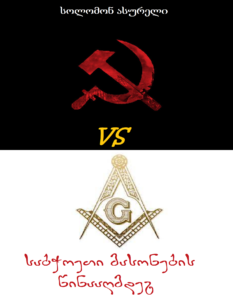
Recommended reading
In the early 90s of the 20th century, the Second Republic of Georgia went through the most difficult years. Masonic activity was equivalent to surrealism in Georgia at that time. At the beginning of the 21st century, there are already several Georgian masons who are not only members of the masonic associations of different countries, but also actively worked to bring light to Georgia. Even today, there are many Georgian Freemasons scattered around the world in many lodges of foreign countries. We hope that in the coming years these brothers will return to Georgia, their homeland, and join us in the Grand Lodge of Georgia, which is the only regular and legal Masonic association in the entire territory of Georgia.
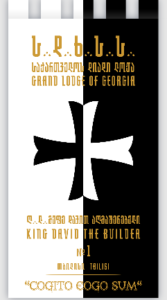 On March 14, 2015, the symbolic dignified lodges "King David the Builder", "Georgi V the Magnificent" and "Sminda Tamar the King" and the 30th Master Mason founded the first and only sovereign, independent and legal regular Masonic union in the history of Georgia - GRAND LODGE OF GEORGIA, which was created in full compliance with Masonic traditions and rules, is also registered according to the rules established by the legislation of Georgia.
On March 14, 2015, the symbolic dignified lodges "King David the Builder", "Georgi V the Magnificent" and "Sminda Tamar the King" and the 30th Master Mason founded the first and only sovereign, independent and legal regular Masonic union in the history of Georgia - GRAND LODGE OF GEORGIA, which was created in full compliance with Masonic traditions and rules, is also registered according to the rules established by the legislation of Georgia.
Since October 2017, the Grand Lodge of Georgia has entered a new stage of development, receiving several new international and bilateral recognitions, including South Africa, France, Italy, India, Mauritius, Cuba, Greece, Czech Republic, Ecuador, Liechtenstein, Spiritus Santi (Brazil), A.S. .
It is very important that on December 13, 2017, St. It was handed over to Georgian Masons in Paris Ancient and Accepted Scottish Statutes პატენტი, რომელმაც აღადგინა ისტორიული კავშირები და სამართლიანობა, ქართული მასონობა დაუბრუნდა მის ევროპულ და ისტორიულ ფესვებს.
2017-2021 Grand Lodge of Georgia was recognized by several dozen Grand Lodges, including Bulgaria, Latvia, Moldova, Israel and many others. In 2017, it became Georgia Confederation of Freemasons of the Caucasus Co-founder and member, and since 2018 Confederation of Grand Lodges of Europe And also the world International Confederation of United Grand Lodges member. Since March 2019, SDL Alliance of Black Sea Masons Co-founder and member.
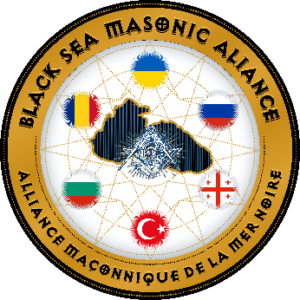
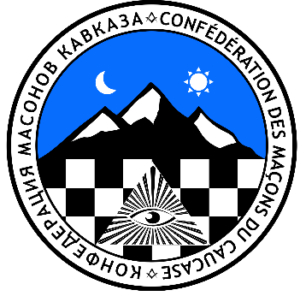
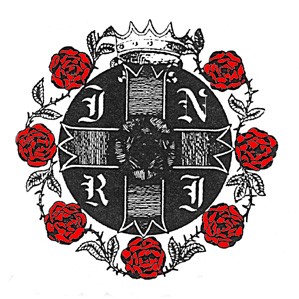
It is important that according to the decision of the United Grand Lodge of England and the Rose and Cross (Rosicrucian) Society of England, although the Grand Lodge of Georgia is not yet recognized by the United Grand Lodge of England (which requires a certain period and procedures), SDL members were allowed to (which was normatively described and amended in the general regulations of the society) joined both the SRIA (the English Rosicrucian Society) and other esoteric Anglo-Saxon directions (eg the Hermetic Order of the Martinists, various knightly and esoteric orders, etc.) .

It has already started in Georgia Grand Lodge of Georgia საფარველ ქვეშ და წიაღში [იურისდიქციაში] მომუშავე სიმბოლურ ღირსეულ ლოჟებში შემავალი მასონ ოსტატების მიღება Ancient and Accepted Scottish Statutes in higher degrees (40 - 330). In 2020, St. The first Georgian was founded in Tbilisi Lodge of Perfection (40-140 degrees) "prometheus" and in 2022 – Rosicrucian Sovereign Capitol - "Knights of the Radiant Dove" (which Article 15 of the Charter0-180 works in grades).
Of course, there are challenges, both locally and internationally. There is still a lot to be done in order for Georgia to be known in the Masonic circles of the world as a European, Caucasian state, as well as the Grand Lodge of Georgia itself. It is a pity that provocations and harmful activities do not stop, including Attempts to establish an "alternative" structure in Georgia, etc.
Although Freemasonry stands behind politics and religion, each Mason remains a loyal patriot of his country, fatherland and his interests, this should not be forgotten by anyone!
From 2015 until now, GRAND LODGE OF GEORGIA Recognized by several dozen dyad lodges, SDL has become a member, even a founder, of various regional or international Masonic associations. The highest degrees of the ancient and accepted Scottish charter were introduced to Georgia, which is a precursor to the creation of the Supreme Council of Independent Georgia. SDL members are free to join Rosicrucian, Martinist and other esoteric societies in England. Most importantly, the Grand Lodge of Georgia introduced Georgia as a state and country to many of our European and international friends and partners.
The Grand Lodge of Georgia was launched in 2017 with the active support of various international partners International Masonic Research Institute (International Masonic Research Institute) as the initiator of the establishment. The mentioned institution not only carries out its own Masonic research, academic or scientific activities, but also focuses on the protection and development of civil society, democratic values and freedom of speech.
საქართველოს დიადმა ლოჟამ 2017 წლიდან კიდევ უფრო გაბედული ნაბიჯები გადადგა და წარადგინა საკუთარ თავი ჩრდილო და სამხრეთ ამერიკის კონტინენტზე, უფრო აქტიურად ვიდრე მანამდე, უფრო მიზანმიმართულად და მეტი შედეგის მოლოდინით. 2022 – 2025 წლებში, საქართველოს დიადი ლოჟა ელის ყოვლის მომცველ მხარდაჭერას და აღიარებას ჩრდილოეთ ამერიკის მასონური წრეების მხრიდან. ჩვენი ერთ-ერთი ამოცანაა იმ ხელოვნური იზოლაციის გარღვევა, რომელიც, აი უკვე, 200 წელზე მეტია რაც თავს მოგვახვიეს [და ახლაც არის ასეთი მცდელობა], ახალი პერსპექტივების, პროგრესული მომავლისა და თავისუფლების დამკვიდრების საზიანოდ. მიგვაჩნია, რომ საქართველოს დიადი ლოჟა, ქართული, ეროვნული მასონური ორდენი, წარმოადგენს ერთ-ერთ ხიდს ჩვენი სახელმწიფოსა და მის მეგობრებს შორის, ერთ-ერთ საშუალებას, რომელიც მუდამ დგას სახელმწიფოებრიობის, სუვერენიტეტისა და ღირსეული, თანასწორი და სამართლიანი განვითარების სადარაჯოზე. ეს პრინციპები და მიმართულებები მნიშვნელოვნად გამოცხადა საქართველოს დიადი ლოჟის დიადმა ოსტატმა (2022-2025 წწ. კადენცია) ყოვლად ღირსეულმა ძმა გიორგი პ∴.-მ, დიადი ლოჟის ეროვნულ ასამბლეაზე.
Symbolic lodges within the jurisdiction of the Grand Lodge of Georgia establish fraternal, bilateral relations with partner symbolic lodges of different jurisdictions from different countries of the world. In the format of regional and international organizations, Georgia will always appear as a bearer of Georgian, Caucasian, worthy traditions, an irreplaceable part of Western values and world civilization. Various international events, which are held on the territory of Georgia, contribute even more to the presentation and familiarization of our homeland to foreign partners.
Of course, there are challenges, both locally and internationally. There is still a lot to be done in order for Georgia to be known in the Masonic circles of the world as a European, Caucasian state, as well as the Grand Lodge of Georgia itself. It is a pity that provocations and harmful activities do not stop, including Attempts to establish an "alternative" structure in Georgia, etc.
Although Freemasonry stands behind politics and religion, each Mason remains a loyal patriot of his country, fatherland and his interests, this should not be forgotten by anyone!
From 2015 until now, GRAND LODGE OF GEORGIA Recognized by several dozen dyad lodges, SDL has become a member, even a founder, of various regional or international Masonic associations. The highest degrees of the ancient and accepted Scottish charter were introduced to Georgia, which is a precursor to the creation of the Supreme Council of Independent Georgia. SDL members are free to join Rosicrucian, Martinist and other esoteric societies in England. Most importantly, the Grand Lodge of Georgia introduced Georgia as a state and country to many of our European and international friends and partners.
The Grand Lodge of Georgia was launched in 2017 with the active support of various international partners International Masonic Research Institute (International Masonic Research Institute) as the initiator of the establishment. The mentioned institution not only carries out its own Masonic research, academic or scientific activities, but also focuses on the protection and development of civil society, democratic values and freedom of speech.
საქართველოს დიადმა ლოჟამ 2017 წლიდან კიდევ უფრო გაბედული ნაბიჯები გადადგა და წარადგინა საკუთარ თავი ჩრდილო და სამხრეთ ამერიკის კონტინენტზე, უფრო აქტიურად ვიდრე მანამდე, უფრო მიზანმიმართულად და მეტი შედეგის მოლოდინით. 2022 – 2025 წლებში, საქართველოს დიადი ლოჟა ელის ყოვლის მომცველ მხარდაჭერას და აღიარებას ჩრდილოეთ ამერიკის მასონური წრეების მხრიდან. ჩვენი ერთ-ერთი ამოცანაა იმ ხელოვნური იზოლაციის გარღვევა, რომელიც, აი უკვე, 200 წელზე მეტია რაც თავს მოგვახვიეს [და ახლაც არის ასეთი მცდელობა], ახალი პერსპექტივების, პროგრესული მომავლისა და თავისუფლების დამკვიდრების საზიანოდ. მიგვაჩნია, რომ საქართველოს დიადი ლოჟა, ქართული, ეროვნული მასონური ორდენი, წარმოადგენს ერთ-ერთ ხიდს ჩვენი სახელმწიფოსა და მის მეგობრებს შორის, ერთ-ერთ საშუალებას, რომელიც მუდამ დგას სახელმწიფოებრიობის, სუვერენიტეტისა და ღირსეული, თანასწორი და სამართლიანი განვითარების სადარაჯოზე. ეს პრინციპები და მიმართულებები მნიშვნელოვნად გამოცხადა საქართველოს დიადი ლოჟის დიადმა ოსტატმა (2022-2025 წწ. კადენცია) ყოვლად ღირსეულმა ძმა გიორგი პ∴.-მ, დიადი ლოჟის ეროვნულ ასამბლეაზე.
Symbolic lodges within the jurisdiction of the Grand Lodge of Georgia establish fraternal, bilateral relations with partner symbolic lodges of different jurisdictions from different countries of the world. In the format of regional and international organizations, Georgia will always appear as a bearer of Georgian, Caucasian, worthy traditions, an irreplaceable part of Western values and world civilization. Various international events, which are held on the territory of Georgia, contribute even more to the presentation and familiarization of our homeland to foreign partners.
